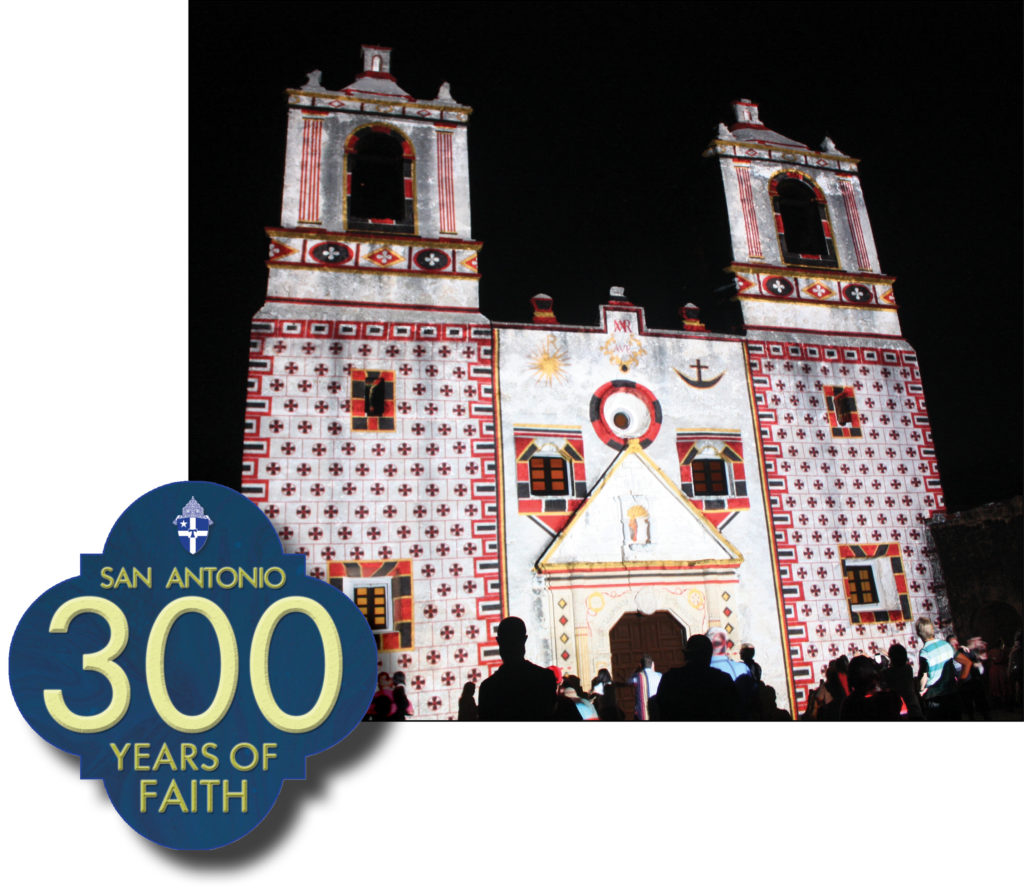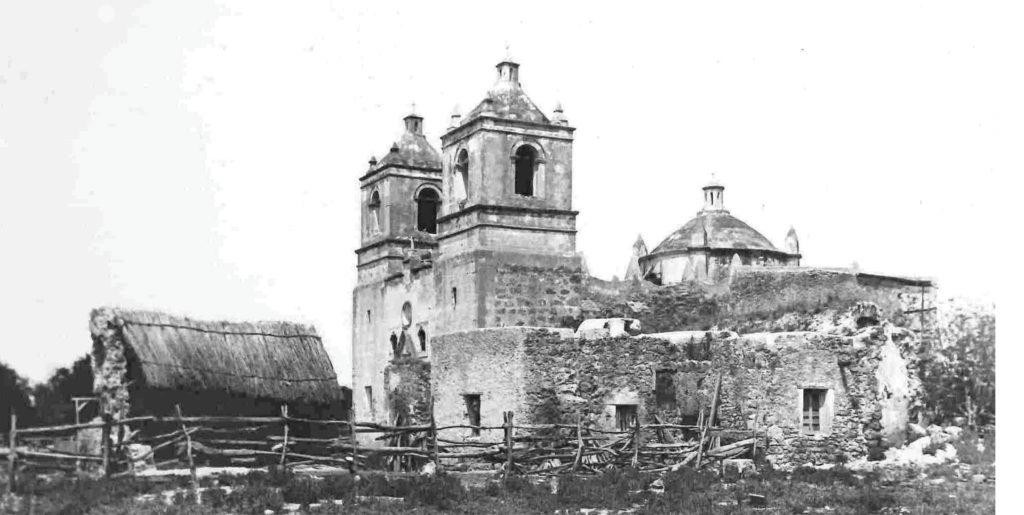BY CAROL BAASS SOWA
TODAY’S CATHOLIC
This is the third in a multi-part series.
 SAN ANTONIO • Only
SAN ANTONIO • Only  one of San Antonio’s five mission churches remained with roof intact and all walls standing in the more than a century of neglect following the 1794 secularization — Mission Nuestra Señora de la Purísima Concepción de Acuña. It did, however, suffer the mid-19th century indignity of being knee-deep in bat excrement for more than a decade while harboring a massive bat colony. On the plus side, this may have served as a temporary deterrent to the vandalism that befell all the abandoned missions, at least for the interior of Mission Concepción’s church.
one of San Antonio’s five mission churches remained with roof intact and all walls standing in the more than a century of neglect following the 1794 secularization — Mission Nuestra Señora de la Purísima Concepción de Acuña. It did, however, suffer the mid-19th century indignity of being knee-deep in bat excrement for more than a decade while harboring a massive bat colony. On the plus side, this may have served as a temporary deterrent to the vandalism that befell all the abandoned missions, at least for the interior of Mission Concepción’s church.
Architect O’Neil Ford, who became the Archdiocese of San Antonio’s restoration architect for the missions in the 1960s, recalled that when he first visited the missions in 1924, “Concepción Mission was beautiful, firm and scarcely touched by time and abuse, though it had suffered the same fate as the other missions by the barbarians who had carved their initials as high as their hands would reach.”
Not built on the shifting clay soil of the other missions (and most of San Antonio), Concepción’s foundation was on rock, which kept its stone walls from cracking and collapsing. The porous rock held caves and an underground river though, leading to problems from rising damp.
The original designer and builder of Concepción’s “permanent” stone church was the ill-fated master mason who fled town on a murder charge, leaving Mission San Antonio de Valero’s church mostly unfinished. Fortunately for Concepción, he had begun work on it first, so it was further along in completion and was finished by others before too many years passed. The church was dedicated on Dec. 8, 1755.
When secularization came, the living quarters, workshops, granary, tools, weaving equipment, farm animals and ranch and pastureland were turned over to the remaining 38 native inhabitants, with the local church retaining ownership of the church building, sacristy and convento. A town council, composed of mission residents, determined the distribution and management of common lands.
By 1815, however, few Native Americans resided in the deteriorating quarters and, in 1824, a complete reappraisal put the properties in new hands. By then, all native housing had collapsed. The partially fallen convento was sold and became residences, but by the 1890s was used for stables and storage. The granary and workshops also became dwellings, but collapsed by the 1850s. The 1835 Battle of Concepción, with James Bowie and James Fannin leading the successful Texians, brought the fight for Texas independence to Concepcion’s front door and possibly inflicted further damage to the site.
In 1841, Bishop John Odin purchased convento stones from the city of San Antonio to repair the church of Nuestra Señora de Candelaria, which became San Fernando Cathedral. (Tradition has it that area residents had already been helping themselves to the stones there for their homes.) In 1855, the church turned over property at Concepción to the Marianists, who restored the old acequia and farmed the land to support their school, which later became St. Mary’s University. Theirs was the task of removing the two feet of bat guano from the church floor and repairing the church. By then, the native quarters and walls surrounding the mission were completely gone.
The church reopened in 1861 and for the next five years Concepción served as a Marianist novitiate, but by 1873 it was being leased to sharecroppers. Though considered the best-preserved of the missions, visitors described it as a deserted relic of a bygone time. Then, in the 1880s, Bishop John Neraz spruced up the old church, rededicating it in 1887. Regular services commenced, but became intermittent within a few years.
By 1890, the elaborate and colorful designs that once covered the church’s exterior were beginning to fade away, with only traces of red encircling the ocular choir window visible today. The brilliant façade of the past has been recreated in “Restored by Light” events in recent years. Following the Marianist departure from Concepción in 1911, Bishop John William Shaw undertook restoration of all the missions, including Concepción, where remnants of the church’s original interior frescos were discovered beneath layers of plaster. All that remains of Concepcion’s frescos can be seen in the sacristy, bell tower chapels and convento library.
In the 1930s, general repairs and investigative work were carried out by architect Harvey Smith with workers from the Works Progress Administration (WPA), who repaired the church roof and identified buried foundations. More repairs were carried out in the 1950s and 1960s, including restoration of the convento and arcaded corridor. In the 1980s, preservation of the convento frescos was undertaken and, in 1997, failing 20th century cement coatings from the church’s still-in-place 18th century roof and dome were removed. By then, the Archdiocese of San Antonio and the National Park Service had entered into a unique partnership to preserve the missions, detailed in next issue’s story: Mission San Jose – priests, parks and preservation.



